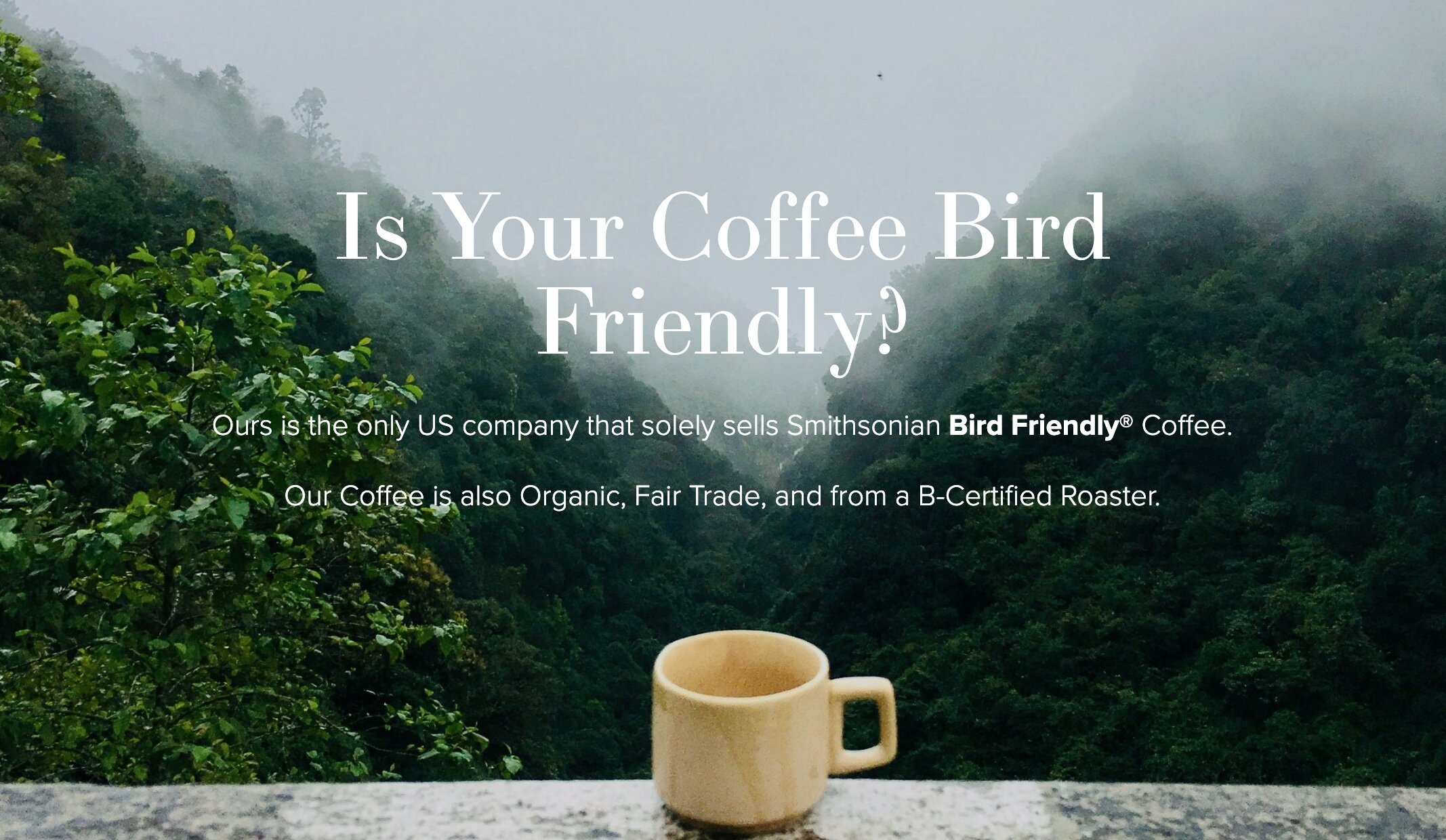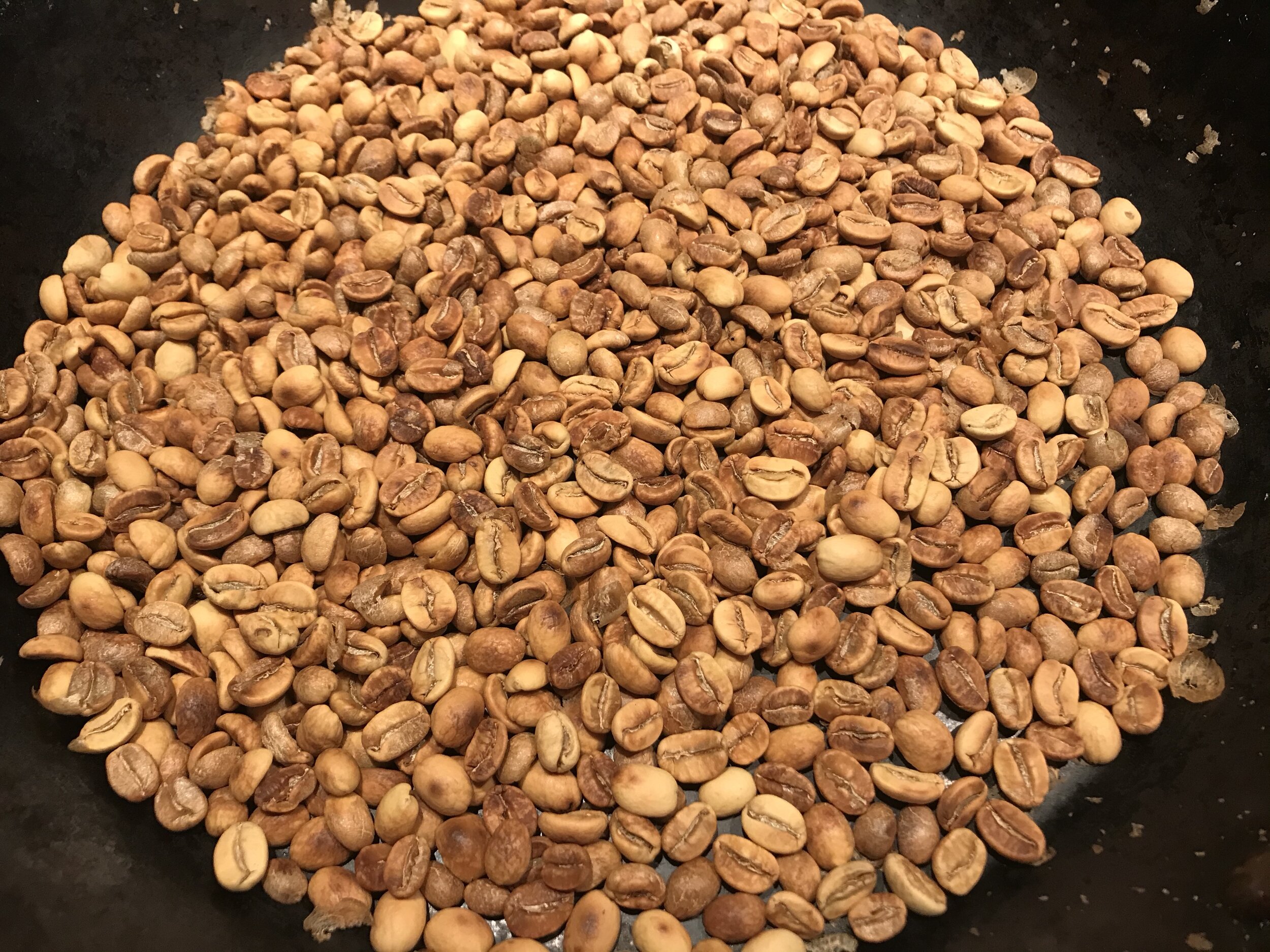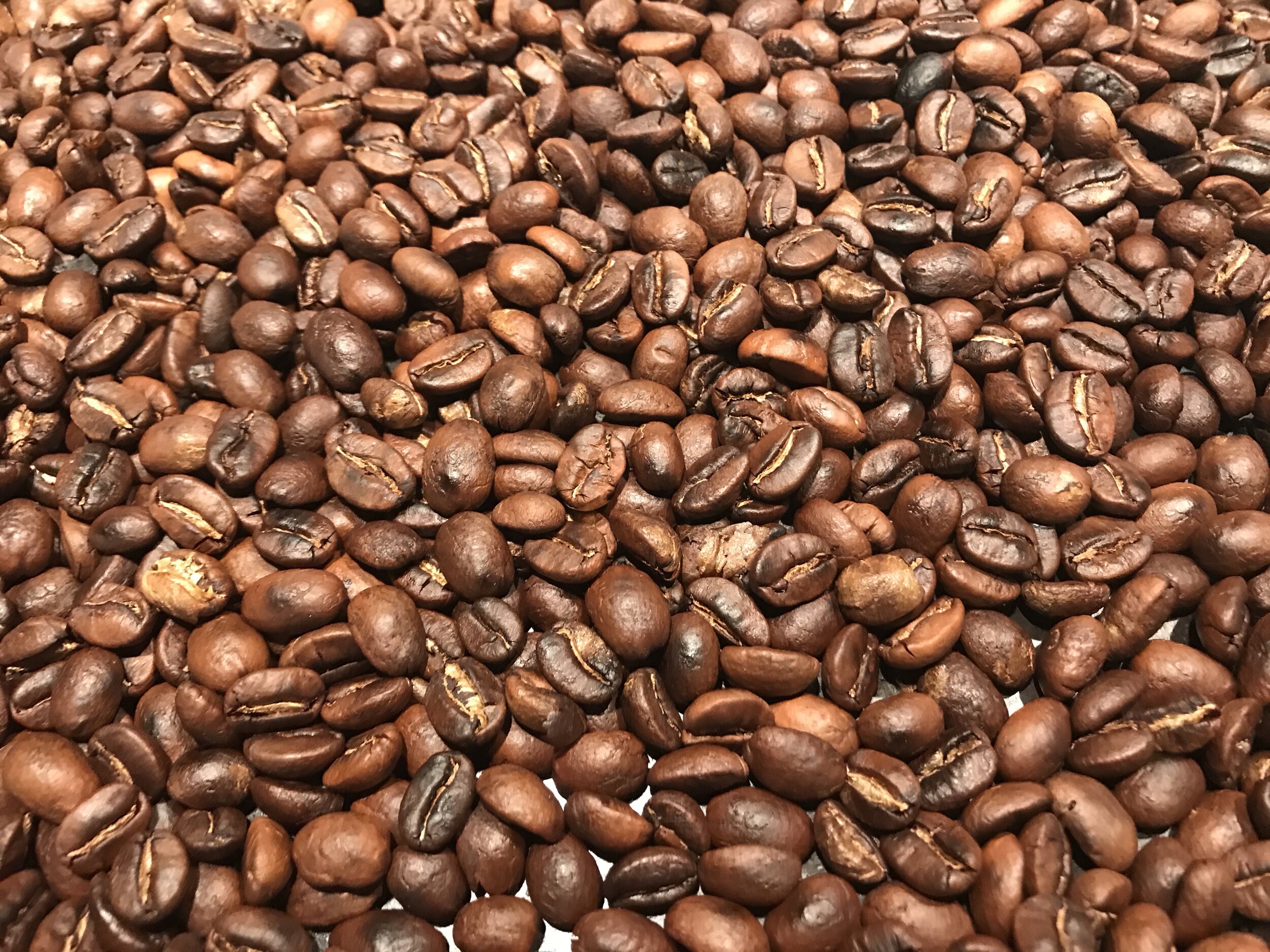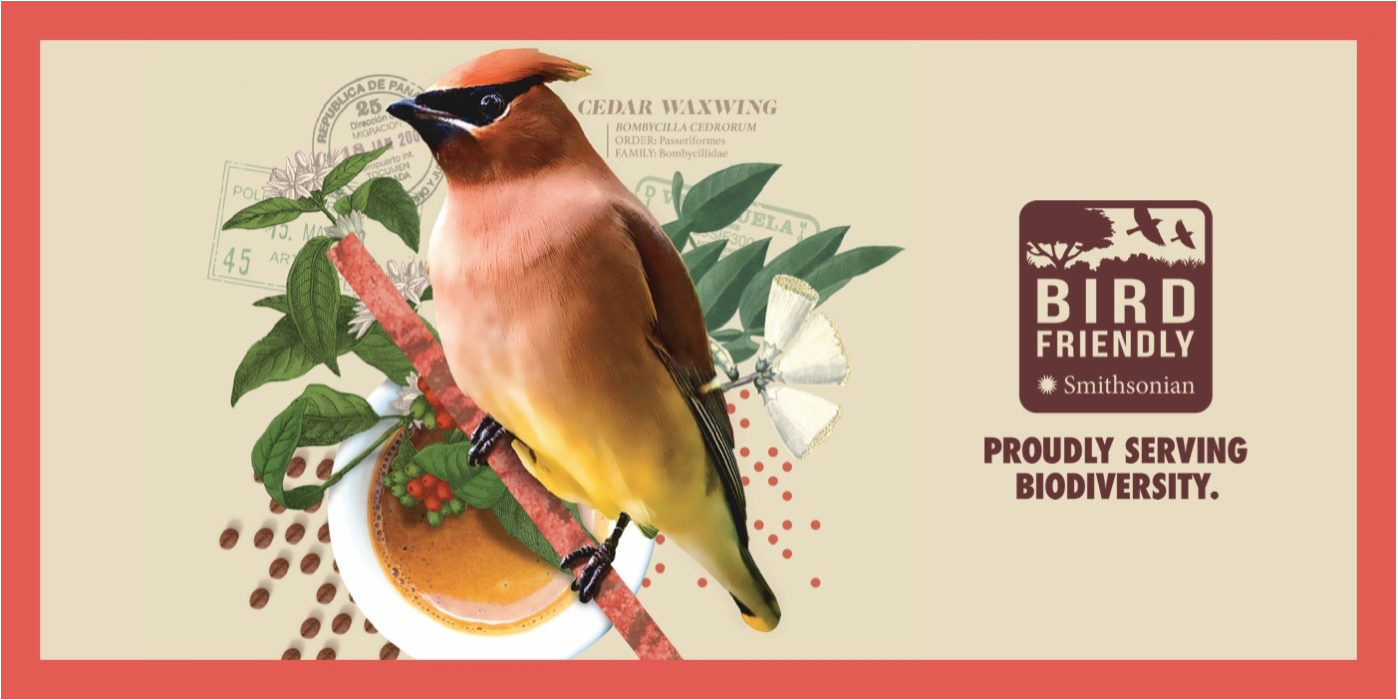Birds and Beans Coffee: What to Drink if You Love Birds & Great Coffee
CLICK HERE TO ORDER BIRDS AND BEANS COFFEE
Arabica coffee loves the shade and thrives within the understory of other, taller trees—ie in a polyculture. But there are degrees of overstory quality, some of which are excellent bird habitat, and some are less so as the above image illustrates. Remember, just because your coffee is organic, shade-grown, and fair trade doesn’t mean it creates quality habitat for birds. (See the quoted distinctions below between bird-friendly, organic, and fair trad)e. With Birds and Beans, you get all the benefits in one coffee. In permaculture, we call that ‘stacking functions.’
Birds and Beans only sells and roasts Smithsonian-certified bird-friendly, shade-grown organic coffee. Buy it in 5# bags for only about $12 per pound, which includes shipping. Most organic coffee beans retail for $12 for a 12oz (.75#) bag.
“Traditionally, coffee is grown in the shade of dense canopy, intermixed with anywhere from a few to a hundred species of trees and other crops like fruits and nitrogen-fixing legumes, but decades of global coffee price drops drove many producers to chop down overhead trees and clear the understory for denser planting.” Scientific American: How Green is Your Coffee?
“Rice said that despite growth for products bearing the Bird Friendly label, demand is still not great enough to economically affect farmers, and even in some cases obscures the fact that many are already producing sustainable coffee.” Scientific American: How Green is Your Coffee?
“The organic and fair-trade certifications are laudable programs that give you some confidence about the environmental and social conditions at the coffee farm. However, they don’t expressly safeguard habitat, particularly shade coffee, for migrant songbirds. The Cornell Lab views them as a good intermediate level of sustainable coffee, but there are better options.
Bird Friendly coffee is certified according to standards set by scientists at the Smithsonian Migratory Bird Center. To earn the certification, farms must meet rigorous standards for dense forest shade cover, multiple layers of forest structure, and the presence of epiphytes, which are indicators of forest plant and insect diversity.” What’s The Difference Between Shade-Grown, Organic, Fair-Trade, And Bird-Friendly Coffee?“Many of our most colorful songbirds, including warblers, tanagers, orioles, and grosbeaks, spend five months of the year in and around shade coffee plantations in Mexico and Central and South America—but only if the birds can find them. Shade-coffee plantations—particularly ones that grow coffee under a natural forest canopy—are increasingly being deforested, leaving North American migrants with fewer places to spend the winter”
“Can shade-grown coffee help these birds? Most coffee drinkers figure the answer is yes. But as it turns out, the words “shade-grown” on a package of coffee can refer to a range of habitat conditions that offer varying degrees of refuge for migratory songbirds”
“Bird Friendly. Certified by scientists from the Smithsonian Migratory Bird Center, this coffee is organic and meets strict requirements for both the amount of shade and the type of forest in which the coffee is grown. Bird Friendly coffee farms are unique places where forest canopy and working farm merge into a single habitat. By paying a little extra and insisting on Bird Friendly coffee, you can help farmers hold out against economic pressures and continue preserving these valuable lands. The good news is that there’s more Bird Friendly coffee out there than many people realize—we just need to let retailers know we want it (see below).”
“Organic. As with other organic crops, certified organic coffee is grown without most synthetic pesticides and fertilizers and is fairly sustainable—although there are no criteria for shade cover. Because of coffee’s growth requirements, it’s likely that organic coffee has been grown under some kind of shade, which is good. However, many farmers shade their coffee using other crops or nonnative, heavily pruned trees that provide substantially less habitat for birds, and the organic label offers no information about this.”
“Rainforest Alliance standards for shade cover are less stringent than Bird Friendly, but more than 70 percent of Rainforest Alliance certified farms maintain shade cover and the standard promotes preserving forest in reserves and along waterways. On farms where forest canopy is not the native ecosystem type, conservation area set-asides of 30 percent or greater are required in the standard.”
“Fair Trade. Inspired by humanitarian concerns, Fair Trade labeling helps to ensure that the workers on coffee farms get paid fairly for the work they do. The higher prices that Fair Trade products earn help to provide an alternative to the price leverage that large coffee buyers can wield. However, a Fair Trade label does not convey any specific information about environmental practices.” Making Sense Of Coffee Labels: Does Your Coffee Support Wintering Warblers?
.
Birds and Beans generously donated a bag of green coffee beans to SHO Farm so we could experiment with home-roasting small batches to offer for sale here as a fundraiser. Our low-tech roasting yielded very satisfying results for us, but we felt that the roast uniformity of our stove-top method wasn’t up to their standards, and what they can offer directly to you for a far better price.
Please consider ordering your coffee from Birds and Beans. We get the Chestnut-sided Warbler roast—dark and fragrant, and always fresh. Order the 5# bag, and keep it sealed in a dark place. It’s the most cost-effective way to buy good, organic coffee that also preserves habitat for birds. Your order arrives super fast, as well!
CLICK HERE TO ORDER BIRDS AND BEANS COFFEE
See our little home-roast experiment below, from green coffee beans given to us by Birds and Beans
We used a carbon-steel pan, which is lighter than a cast iron pan, and is angled sides allow for easy and constant flipping of the beans for an even roast. We use a full burner with the exhaust fan on high until the beans turn brown, and then we lower the heat a bit until they achieve our desired darkness.







